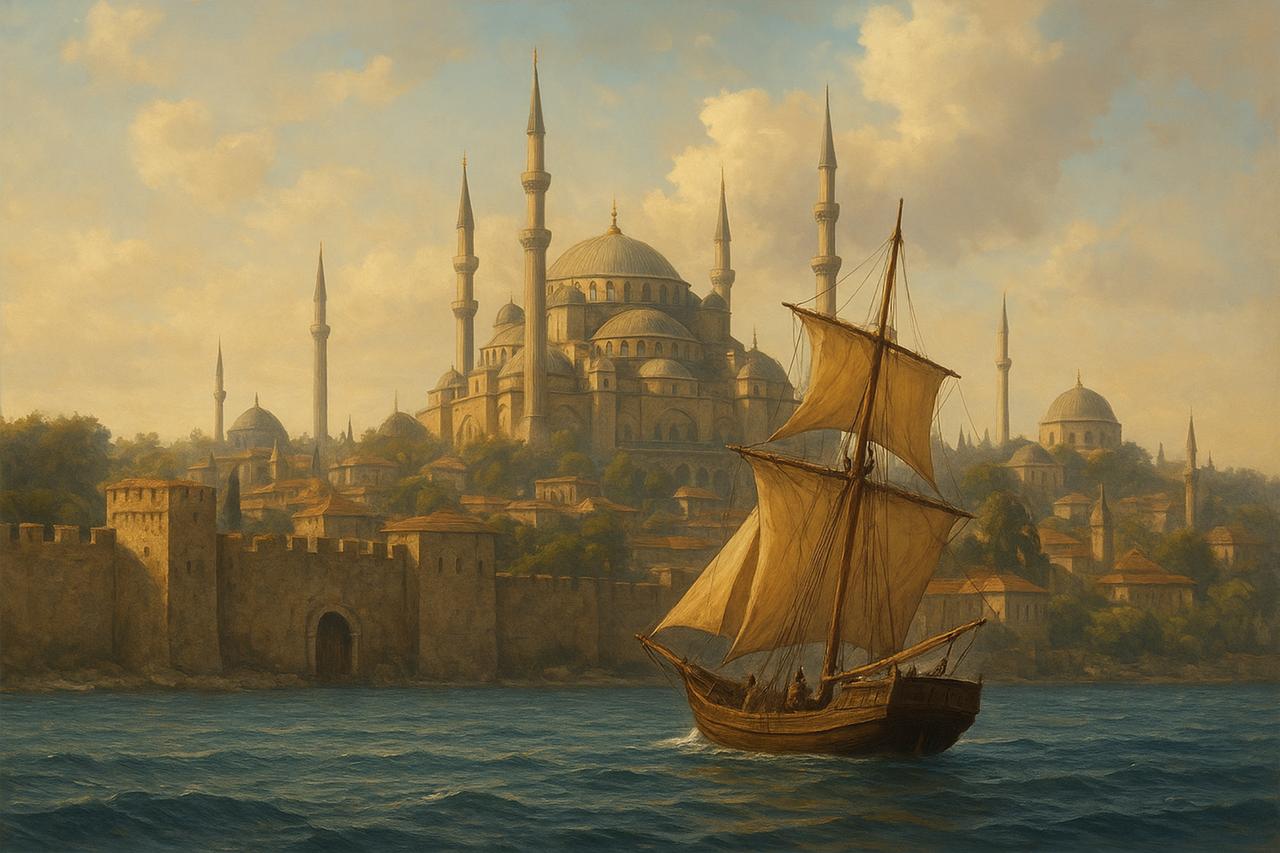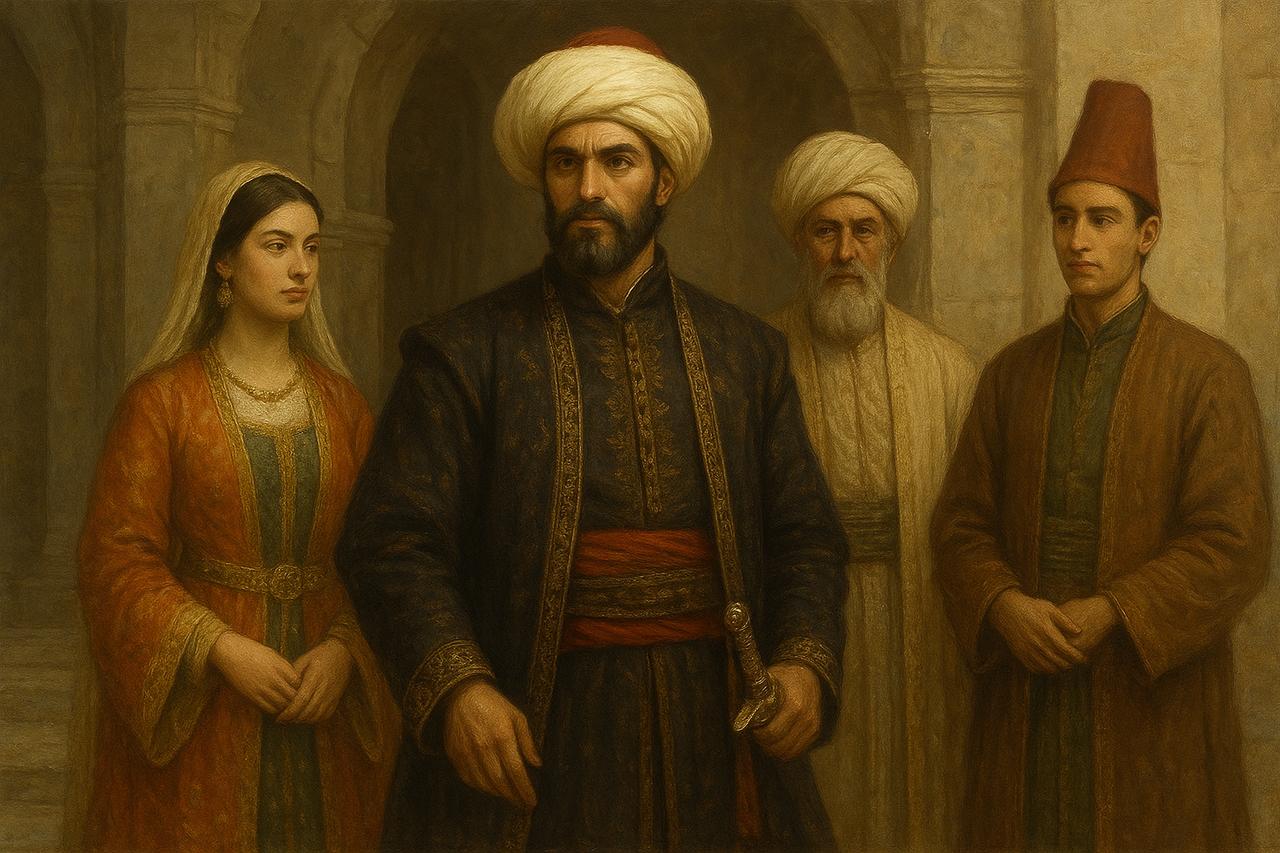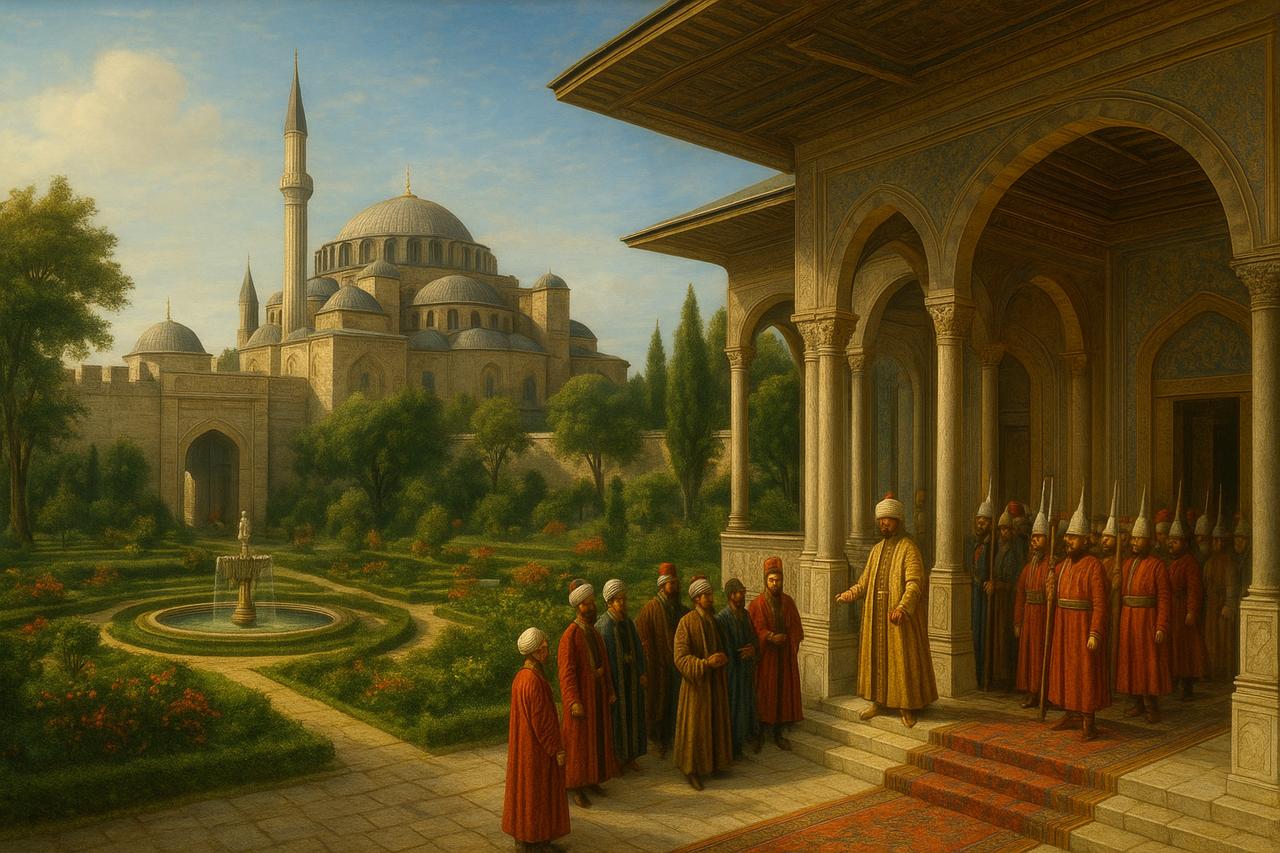
In 1589, Sultan Ahmad al-Mansur of Morocco dispatched his envoy, Ali ibn Muhammad al-Tamkroti, to the court of Ottoman Sultan Murad III.
What began as a diplomatic mission became a rare historical record. In his book (The Musky Note At The Turkish Embassy), Al-Tamkroti, the Moroccan jurist, recorded the details of his journey.
Before this journey, Al-Tamkroti had never left his remote hometown of Tamkrot.
Yet his detailed travelogue offers a vivid window into Istanbul in the late 16th century, at the dawn of the 17th.
The journey of al-Tamkroti is considered one of the most significant diplomatic travel missions of its time.
Al-Tamkroti left Tamkrot on March 18, 1589, and reached Istanbul after an eight-month journey.

In his first scene of istanbul Al-Tamkroti describes it as a vast, walled city with numerous gates, bustling markets, grand mosques, baths, and inns.
He noted that it served as the administrative and cultural heart of the former Byzantine Empire, a city still proudly associated with Roman heritage by its Muslim inhabitants.
Its architecture was circular around the harbor, which hosted a wide variety of ships and naval vessels, including galley ships and pataches.
The city’s main districts were Istanbul on the right of the harbor and Galata on the left.
Al-Tamkroti was as captivated by Istanbul’s markets as by its mosques and palaces, calling them the city’s bustling heart and “a world unto themselves.”
The markets thrived with activity morning and evening, bringing together merchants from the East and the West and displaying countless goods.
Al-Tamkroti noted seeing Chinese silk, Indian spices, Yemeni amber, African gold, and embroidered fabrics from Europe.
These markets established Istanbul as a global crossroads and a major economic hub connecting the farthest corners of the world.

Al-Tamkroti paid close attention to the clothing and adornments of Istanbul’s inhabitants, noting how attire reflected social status.
He observed men wearing large, colorful turbans that varied according to rank and position, along with wide robes embroidered with gold and silk threads.
Soldiers, by contrast, wore simple, austere uniforms, reflecting their military function and discipline. The elite impressed him with garments of opulent decoration, signaling wealth and high social standing.
He also described women’s attire, noting their richly patterned silk dresses and adornments of gold, silver, and precious stones.
According to al-Tamkroti, the beauty of Istanbul’s women was heightened by these ornaments, making them appear as if displaying entire fortunes.
He further remarked on the stark contrast between the modest clothing of ordinary citizens and the luxurious dress of the upper classes, viewing it as a clear reflection of social stratification within Ottoman society.
He also noted the hospitality he received, highlighting the generosity and warm welcome extended to him both at the palace and in the homes of the city’s elite.

In his observations of official ceremonies, al-Tamkroti devoted particular attention to the Sultan’s procession, describing it as “one of the most astonishing sights to behold.”
The Sultan would appear surrounded by soldiers, arranged in precise, synchronized ranks that inspired awe and admiration.
The general public stood silently on either side, their solemn stillness lending a sense of reverence, as if witnessing a sacred spectacle.
Al-Tamkroti saw in the procession a concentrated display of state authority, where military order and political symbolism combined to manifest the Sultan’s grandeur before his subjects and visiting foreign delegations alike.